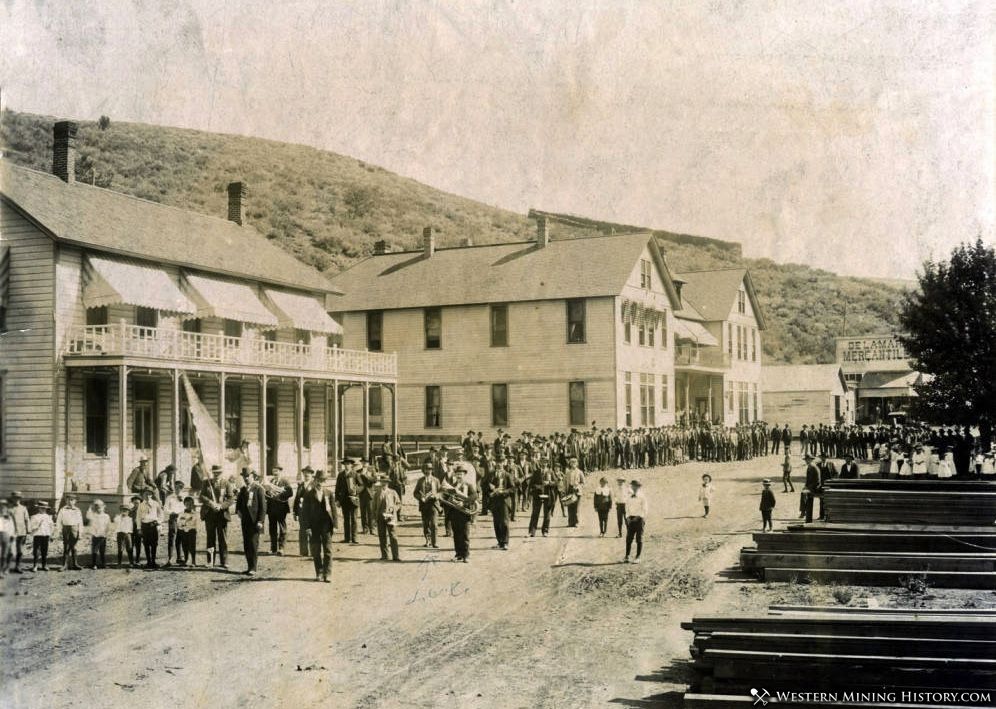De Lamar History
Note: two variations of the name, "De Lamar" and "DeLamar", are used so extensively in historical documents to describe the town, the mine, and Joseph DeLamar, that it is difficult to know what is the correct form of the name.
The town of De Lamar was built near the De Lamar silver mine in the isolated Owyhee mountain range of southwest Idaho. The town has been abandoned for decades and the few remaining structures are on the private property of a modern open pit mining operation.
De Lamar was established by Joseph R. DeLamar at the site of the DeLamar mine in 1888. The business district was parallel to Jordan Creek, and around a sharp bend lower De Lamar, also known as "Tough Town" was situated. Tough town was the location of livery barns, saloons, and the red light district.
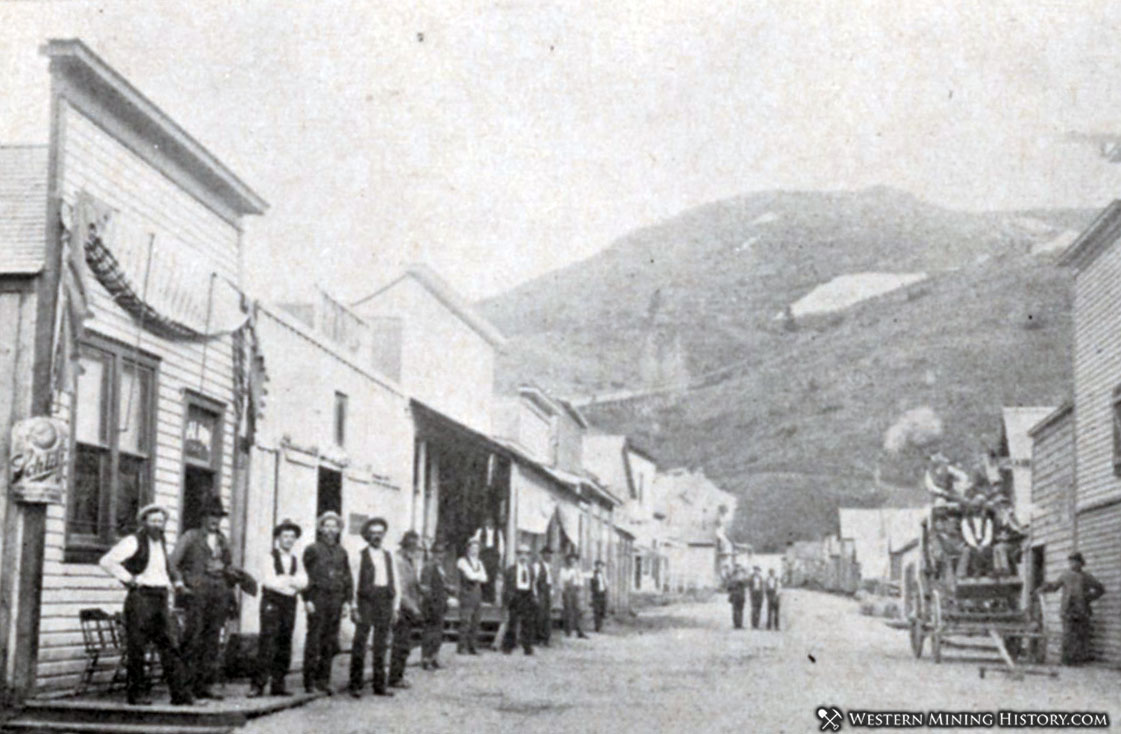
According to the 1960 publication Historic Silver City - The Story of the Owyhees by Mildretta Adams, "Jennie Mitchell and her girls moved over from Hailey, to occupy one of the largest houses of ill-repute in De Lamar. One well-known demimonde who graced her establishment was the lady known as Long-tow Liz."
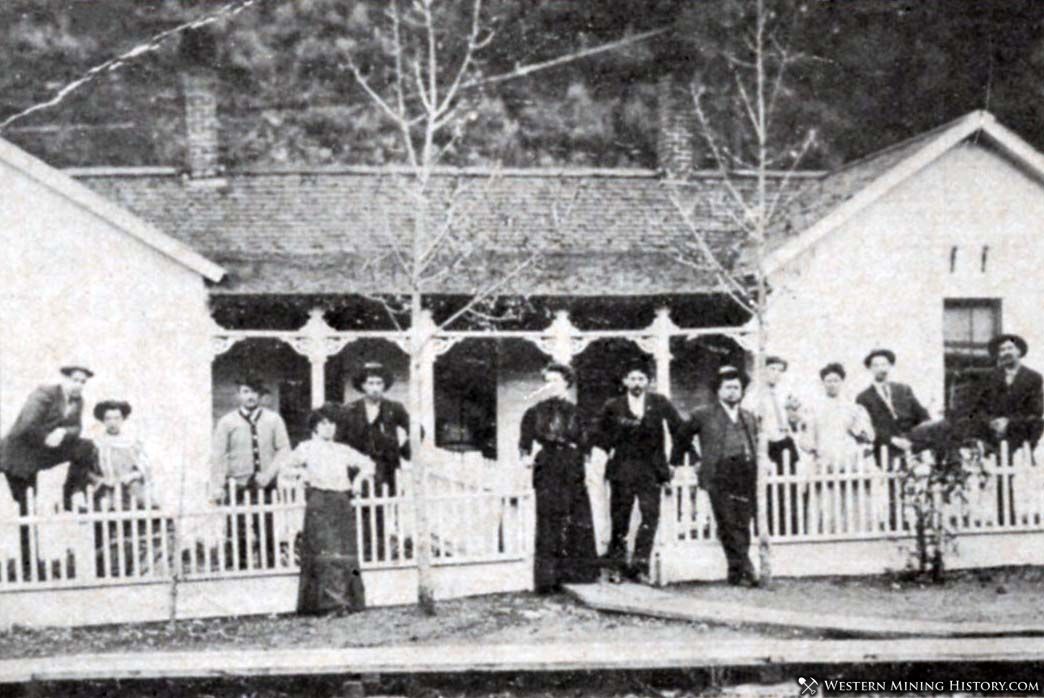
De Lamar had a post office 1888-1942.
De Lamar Described in 1898
The 1898 publication A historical, descriptive and commercial directory of Owyhee County, Idaho gave an overview of the town of De Lamar, the De Lamar Mining Company, and the miner's union:
The town of De Lamar is prettily nestled in a cluster of hills, prominent among which is the De Lamar mountain, distant sixty miles from the capital, Boise City, and nine miles from the county seat. Silver City. It is lighted electrically, and supplied with telegraphic and telephonic communications with the outer world. The town is located on the banks of Jordan creek, famous in the early history of Owyhee county, the approaches of the town being hncd with well-built residences.
In the center of the town is located the plant of the De Lamar Mining Company, Ltd., consisting of mill buildings, department shops, offices, hotel and bunk houses, and surrounded by the principal mercantile houses. A little further on, still within the hearing of the hum of industry, is another branch of the town, called by the residents "Tough Town," which in mercantile activity fully equals that of the town proper. From there the road to Oregon is skirted by the residences of ranchers, teamsters, milk dealers and woodmen, with here and there an occasional evidence of mining industry, such as the Henrietta mill, Jones' mill, and John Scales' mill, at Wagontown.
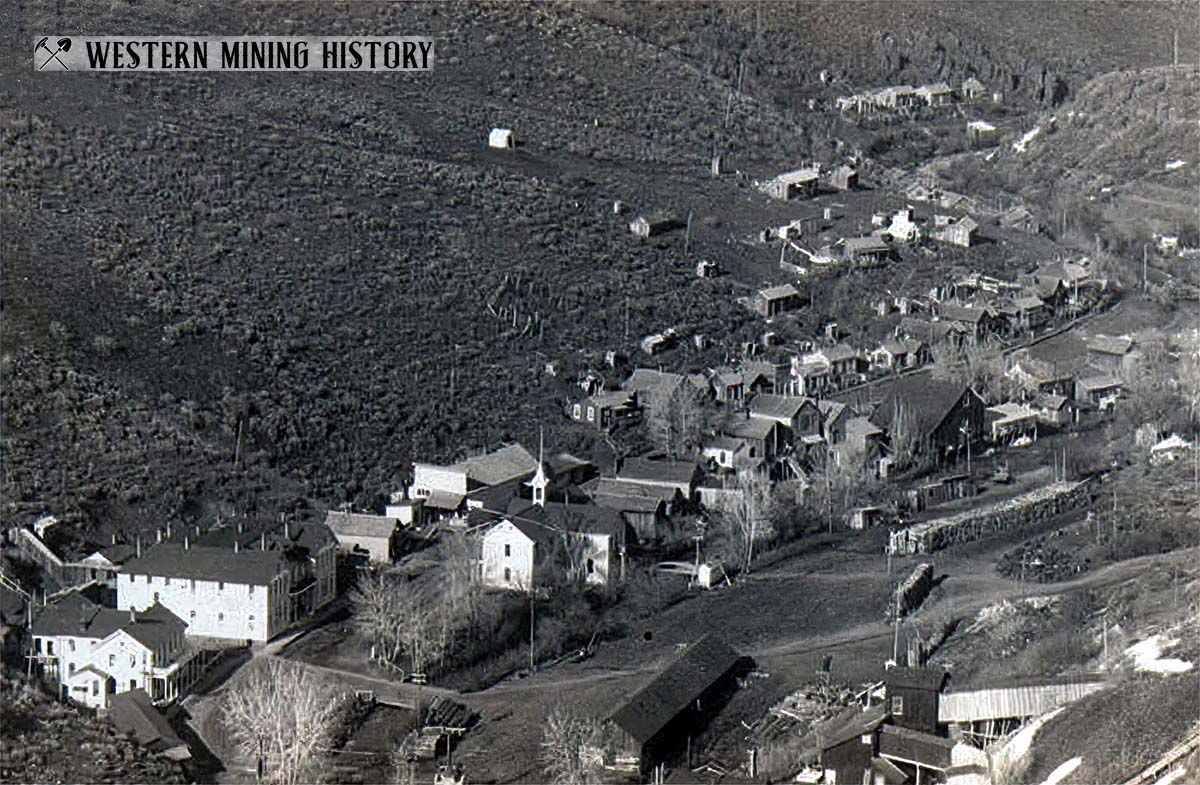
The earliest settlement was at old Wagontown, located about two miles below the center of the town of De Lamar, which was a road station on the stage line running from Silver City to Winnemucca, Nev.
The first mine was located by J. VV. Stoddard, which was afterwards patented, and is now a portion of the De Lamar group. John A. Wilson was the discoverer of the Wilson mine, which forms the nucleus of the De Lamar group. He disposed of his properties in September, 1888, to Captain De Lamar, who subsequently purchased the Sommercamp and Lepley claims. Captain De Lamar vigorously developed his properties, erecting mill, hotel, and other necessary buildings. Peter Adams opened a boarding house, and Tom Jones, John Arvidson, Lewis Walker and others erected buildings, and 1890 found the town in a booming condition, and with a good-sized future. Montie B. Gwinn, of Caldwell, and others, opened a general merchandise store, under the name of the De Lamar Mercantile Company, which is now being carried on by Isay & Gombrig.
In the early part of 1891, Captain De Lamar disposed of his entire interests to the De Lamar Mining Company, Limited, an incorporated company of London, England, who have since their inception made many substantial improvements, besides erecting a substantial hotel, with first-class appointments, taking the place of the one erected by Captain De Lamar, which was destroyed by fire; and it is largely due to the unceasing application of the resident managers that the company possesses a plant whose standard of excellence is unexcelled by that of any mining company in this portion of the West.
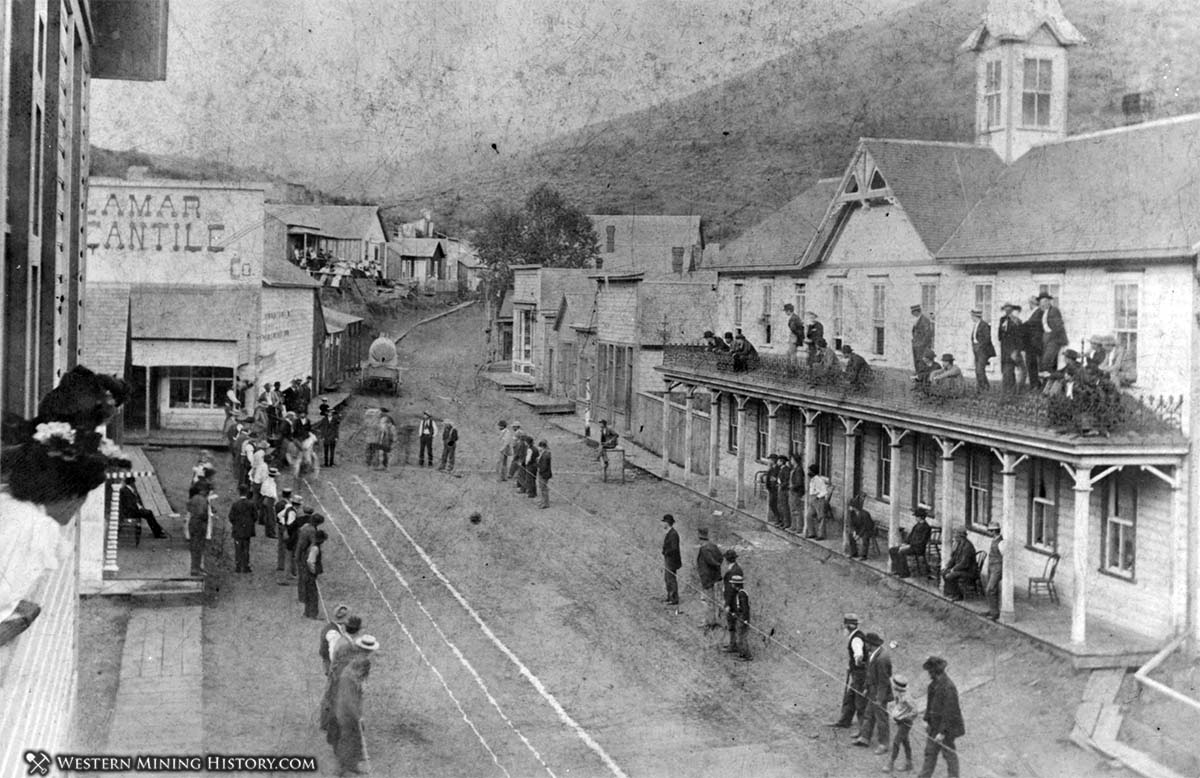
The claims of the De Lamar company, numbering about forty, are located on De Lamar mountain, and in the vicinity are located the Big L Silver Vault, Garfield, Lepley. and many other promising mining properties, which are being exploited with excellent results.
The De Lamar hotel, owned by the mining company, is under the able management of S. H. Hanes, who is ever courteously solicitous for the welfare of the wayfarer.
The principal mercantile houses are: Isay & Gombrig, dealers in general merchandise, with a branch at Silver City; Dr. J. J. Plumcr, drugs; R. S. Hawes, groceries, etc.; George T. McCabe. groceries; Owyhee Meat Company; Peo- ple's meat market; Frank Crosson, general merchandise; Barkle Bros., dealers in wines and liquors; Scott & McCain, liverv stable; and many others, whom space does not permit us to mention.
The public schools are in a flourishing condition, under excellent super- vision, with a membership of about 150 pupils.
A flourishing miners' union, a lodge of Odd Fellows, with a Rcbekah lodge, comprise the secret organizations, and the welfare of the town is generally looked after by the De Lamar Nugget, a spicy and entertaining news- paper, started in May, i8gi, by Lamb & York, and which is still ably edited by Judge Lamb.
De Lamar Mining Company, Limited
The De Lamar Mining Company was incorporated in March, 1891, under the laws of Great Britain, with a nominal capital of 400,000 shares of £1 each.
The principal officers of the company are: Francis Muir, Esq., of London, chairman board of directors; Charles Pakeman, Esq., of London, secretary board of directors; D. B. Huntley, resident manager; E. V. Orford, accountant and resident assistant manager; and Thomas Davey, mine foreman.
The company are the owners of about forty mining claims and millsites, mostly patented, and situated at the town of De Lamar. These several groups of mines were located in the eighties, and in 1887 were purchased of the original owners by Captain J. R. De Lamar, who in the early part of 1891 disposed of them to the De Lamar Mining Company, Ltd., the purchase price, it is said, being about $2,000,000.00.
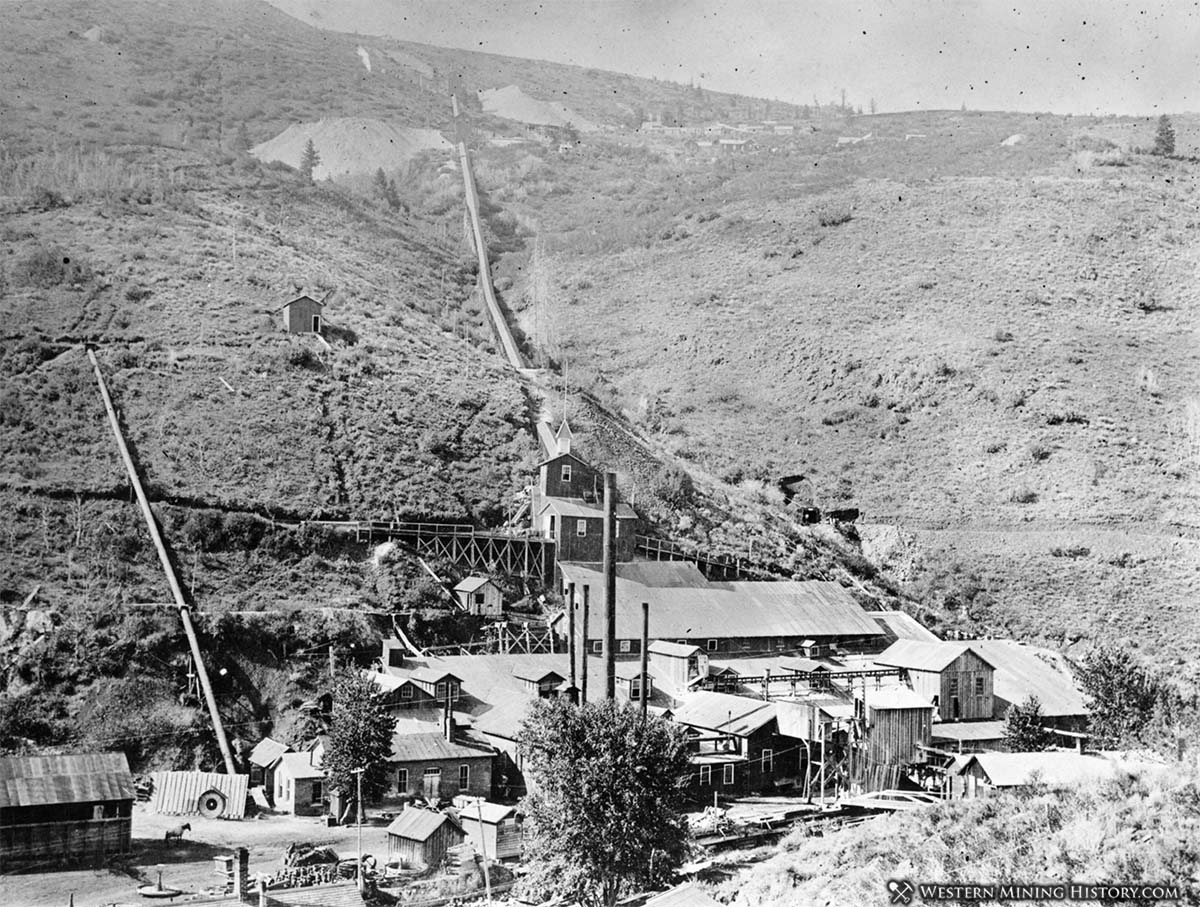
The working openings of the mines embrace about six miles, and the main workings of the property extend 700 feet in vertical depth; and beyond this an incline shaft is now being sunk for prospecting purposes.
A three-rail gravity tramway, about 2,300 feet in length, connects the mines with the mill, which is a pan-amalgamation plant, equipped with forty stamps, twenty-eight pans, etc., and has a capacity of treating 150 tons of ore daily. Connected with this mill is a fifty-ton plant of the Pelaton-Clerici cyanide process. These mills are run by a Corliss engine of 250 horse power, and for about three months in the spring of the year the water power is utilized by means of a six-foot Pelton water wheel.
The plant owned by the company is the most complete one in this section of the country, consisting of hotel and office buildings, store houses, department shops, mill, assay buildings, bunk and boarding houses, tramways, etc., and is covered by an insurance of fully $125,000.00. The company also carries a large stock of wood and other material, and duplicates of machinery, in which there is a large amount invested.
The mills and mines give employment to about 200 men, there being no interruption to the work, except on prominent holidays.
The energy and perseverance of the local managers, together with the liberal support of the home management, has placed this company in the foremost rank of the best mining properties of the West, and the gross output since the organization of the company to date amounts to over $5,000,000.00.
Mr. Dwight B. Huntley, resident manager of the De Lamar Mining Company, Limited, at De Lamar, Idaho, was born in Utica, New York, January 17, 1850. In 1852 his parents came west and located at Grass Valley, California, where he spent his boyhood. He received his schooling in San Francisco, California, and graduated in 1875 at the University of California, and subsequently, two years later, took a post-graduate course at the same university, in mining, metallurgy and chemistry. For several years he was engaged in surveying, assaying and milling, for various companies in Nevada, Arizona, Colorado, New Mexico, South America and British Columbia, and was also connected with the United States geological survey in Utah.
In October, 1896, he was appointed resident manager of the De Lamar Mining Company, which position he at present occupies, and not alone is he held in high honor and respect in the community in which he resides, but in mining circles is spoken of as a conservative, talented and capable manager.
Mr. E. V. Orford, accountant and resident assistant manager of the De Lamar Mining Company at De Lamar, Idaho, was born in Birmingham, England, February 14, 1855. He graduated at Christ's hospital, London, in 1870, and then entered the offices of the "chartered accountants," remaining there about eleven years. In 1881 he came to America, and was engagd in various pursuits until 1888, when he returned to England, where he remained until 1892, when he was appointed accountant of the De Lamar Mining Company, and came to De Lamar, and subsequently received the appointment of resident assistant manager.
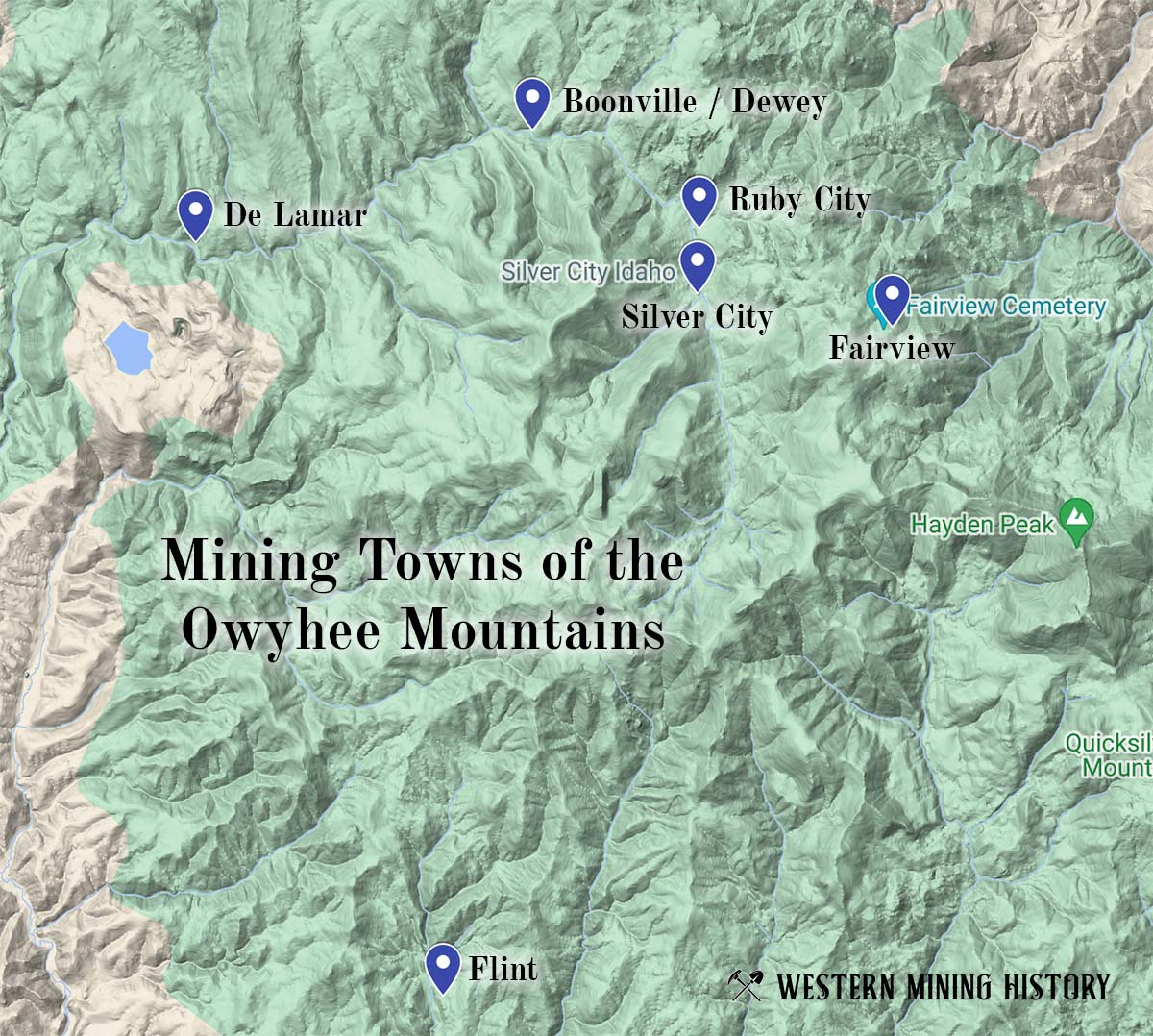
Miners' Union of De Lamar
The Miners' Union of De Lamar is the oldest existing branch of the W. F. of M. in Owyhee county, and was organized on April 18, 1896, the first ofificers installed being: President, J. J. Bennett; vice-president, Thomas Duncalf; recording secretary, Samuel Honey; financial secretary, Ed. Wood; treasurer, William Cayzer; conductor, Charles Morris; warden, William Brasher: trus- tees, James H. Rodda, Fred Tyacke, John Pascoe, Richard Temby and Henry Warren.
Since its organization the Miners' Union of De Lamar has paid out in benefits to members and their families some $4,000.00; and, aside from its social features, has been ever the means of maintaining the harmonious feeling which exists between the De Lamar company and its employees. Its present membership amounts to 150, all in good standing. Its financial affairs are in a flourishing condition, and the great good it has accomplished in De Lamar is acknowledged by all. The present officers are: President. W. H. Smith; vice-president, Thomas Duncalf; recording secretary, William Honey; financial secretary, J. H. W. Roberts; treasurer, Samuel Gregory; conductor, John Kitchen; warden, Henry Newman; trustees, Joseph Prout, William Brasher, William Bird, J. A. Roberts and Archie Warren.
Idaho Gold
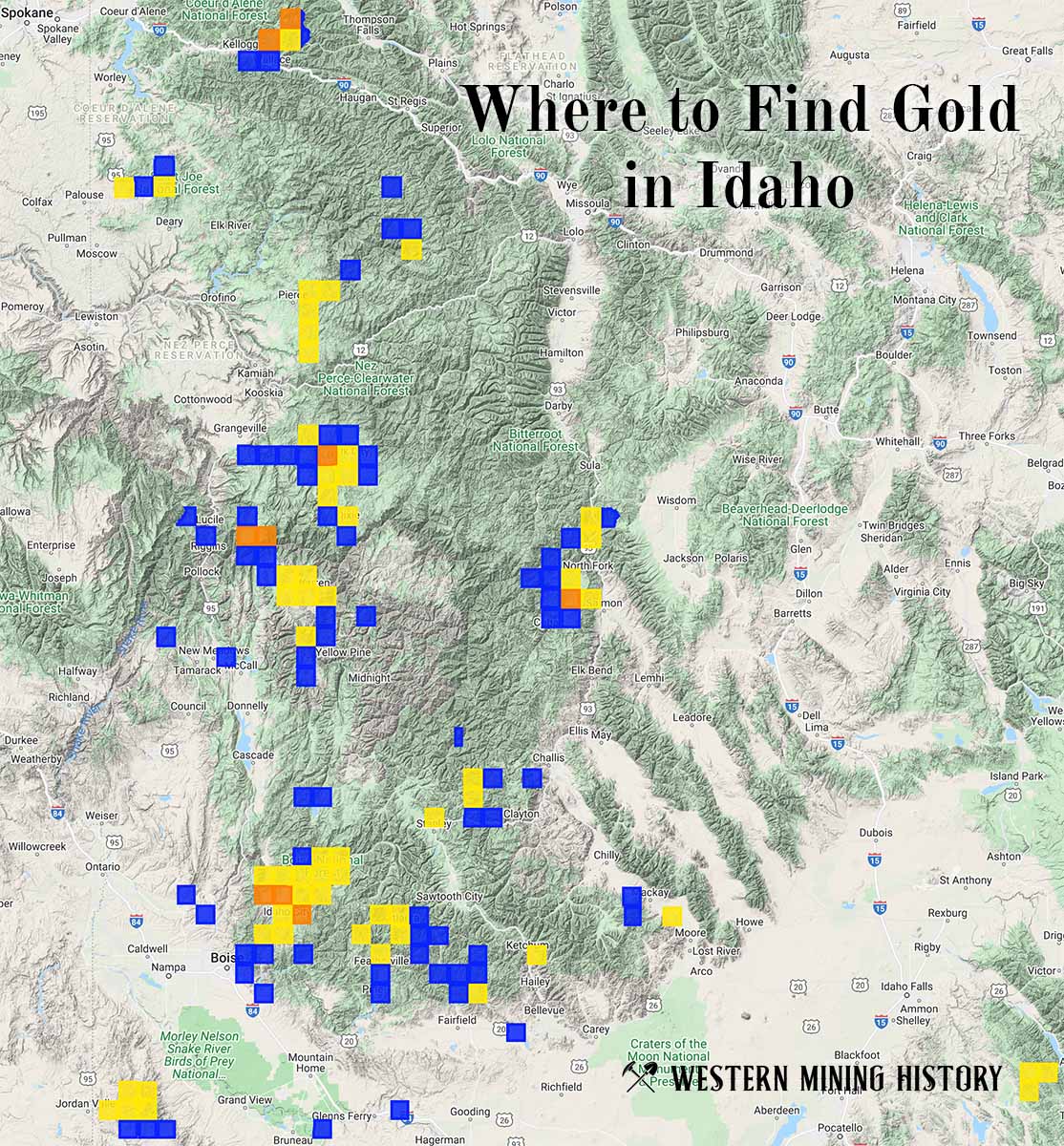
"Where to Find Gold in Idaho" looks at the density of modern placer mining claims along with historical gold mining locations and mining district descriptions to determine areas of high gold discovery potential in Idaho. Read more: Where to Find Gold in Idaho.
